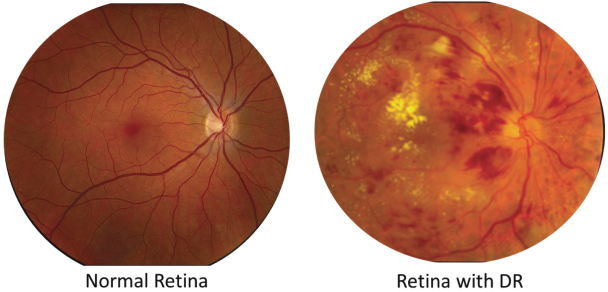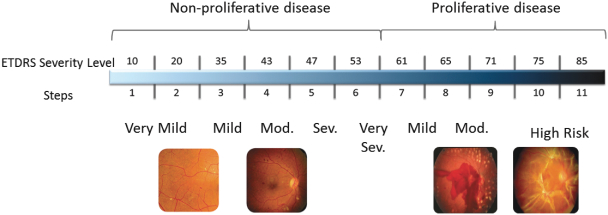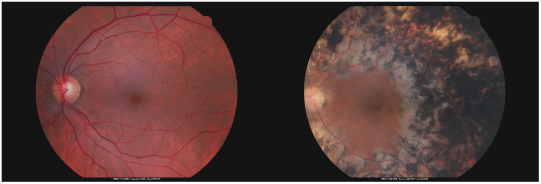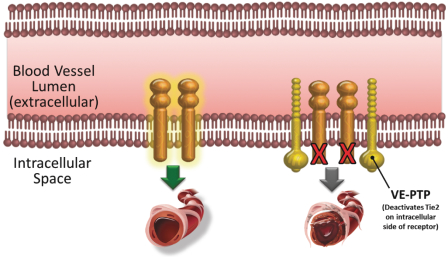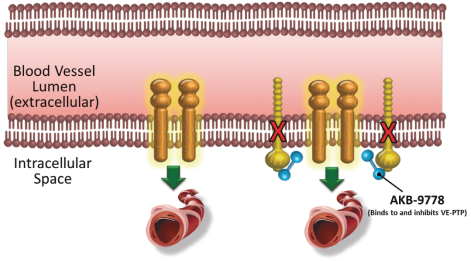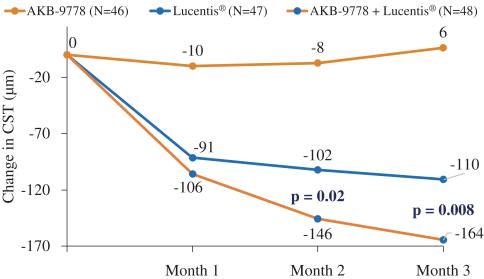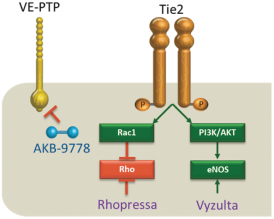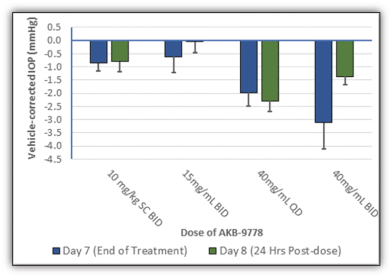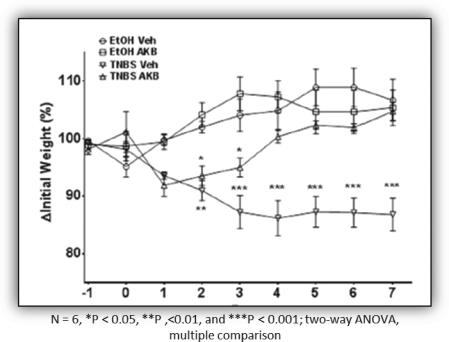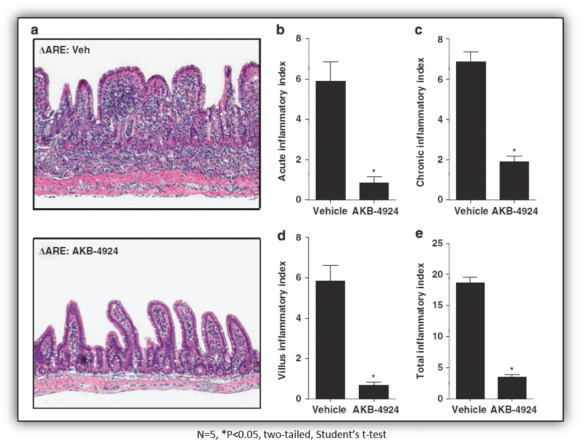If a dealer is used in the sale of the securities in respect of which the prospectus is delivered, we will sell such securities to the dealer, as principal. The dealer, who may be deemed to be an “underwriter” as that term is defined in the Securities Act, may then resell such securities to the publicprevailing market price, at varying prices to be determined by such dealer at the time of resale.sale, or at negotiated prices.
If we offer securities in a subscription rights offering to our existing security holders, weThe selling stockholders may enter into a standby underwriting agreement with dealers, acting as standby underwriters. We may pay the standby underwriters a commitment fee for the securities they commit to purchase on a standby basis. If we do not enter into a standby underwriting arrangement, we may retain a dealer-manager to manage a subscription rights offering for us.
Agents, underwriters, dealers and other persons may be entitled under agreements which they may enter into with us to indemnification by us against certain civil liabilities, including liabilities under the Securities Act, and may be customers of, engage in transactions with or perform services for us in the ordinary course of business.
If so indicated in the applicable prospectus supplement, we will authorize underwriters or other persons acting as our agents to solicit offers by certain institutions to purchase securities from us pursuant to delayed delivery contracts providing for payment and delivery on the date stated in the prospectus supplement. Each contract will be for an amount not less than, and the aggregate amount of securities sold pursuant to such contracts shall not be less nor more than, the respective amounts stated in the prospectus supplement. Institutions with whom the contracts, when authorized, may be made include commercial and savings banks, insurance companies, pension funds, investment companies, educational and charitable institutions and other institutions, but shall in all cases be subject to our approval. Delayed delivery contracts will not be subject touse any conditions except that:
the purchase by an institution of the securities covered under that contract shall not at the time of delivery be prohibited under the laws of the jurisdiction to which that institution is subject; and
if the securities are also being sold to underwriters acting as principals for their own account, the underwriters shall have purchased such securities not sold for delayed delivery. The underwriters and other persons acting as our agents will not have any responsibility in respect of the validity or performance of delayed delivery contracts.
Offered securities may also be offered and sold, if so indicated in the prospectus supplement, in connection with a remarketing upon their purchase, in accordance with a redemption or repayment pursuant to their terms, or otherwise, by one or more remarketing firms, acting as principals for their own accounts or as agents for us. Any remarketing firm will be identified and the terms of its agreement, if any, with us and its compensation will be described in the applicable prospectus supplement. Remarketing firms may be deemed to be underwriters in connection with their remarketing of offered securities.
Certain agents, underwriters and dealers, and their associates and affiliates, may be customers of, have borrowing relationships with, engage in other transactions with, or perform services, including investment banking services, for us or one or more of our respective affiliatesthe following methods when disposing of shares or interests therein:
ordinary brokerage transactions and transactions in which the ordinary coursebroker-dealer solicits purchasers;
block trades in which the broker-dealer will attempt to sell the shares as agent, but may position and resell a portion of business.
In orderthe block as principal to facilitate the offering oftransaction;
purchases by a broker-dealer as principal and resale by the securities, any underwriters may engage in transactions that stabilize, maintain or otherwise affect the price of the securities or any other securities the prices of which may be used to determine payments on such securities. Specifically, any underwriters may over allot in connection with the offering, creating a short position for their own accounts. In addition, to cover overallotments or to stabilize the price of the securities or of any such other securities, the underwriters may bid for, and purchase, the securities or any such other securities in the open market. Finally, in any offering of the securities through a syndicate of underwriters, the underwriting syndicate may reclaim selling concessions allowed to an underwriter or a dealer for distributing the securities in the offering if the syndicate repurchases previously distributed securities in transactions to cover syndicate short positions, in stabilization transactions or otherwise. Any of these activities may stabilize or maintain the market price of the securities above independent market levels. Any such underwriters are not required to engage in these activities and may end any of these activities at any time.
We may engage in at the market offerings into an existing trading market in accordance with Rule 415(a)(4) under the Securities Act. In addition, we may enter into derivative transactions with third parties, or sell securities not covered by this prospectus to third parties in privately negotiated transactions. If the applicable prospectus supplement so indicates, in connection with those derivatives, the third parties may sell securities covered by this prospectus and the applicable prospectus supplement, including in short sale transactions. If so, the third party may use securities pledged by us or borrowed from us or others to settle those sales or to close out any related open borrowings of stock, and may use securities received from us in settlement of those derivatives to close out any related open borrowings of stock. The third party in such sale transactions will be an underwriter and, if not identified in this prospectus, will be named in the applicable prospectus supplement (or a post-effective amendment). In addition, we may otherwise loan or pledge securities to a financial institution or other third party that in turn may sell the securities short using this prospectus and an applicable prospectus supplement. Such financial institution or other third party may transfer its economic short position to investors in our securities or in connection with a concurrent offering of other securities.
Under Rule15c6-1 of the Exchange Act, trades in the secondary market generally are required to settle in two business days, unless the parties to any such trade expressly agree otherwise. The applicable prospectus supplement may provide that the original issue date for your securities may be more than two scheduled business days after the trade date for your securities. Accordingly, in such a case, if you wish to trade securities on any date prior to the second business day before the original issue date for your securities, you will be required, by virtue of the fact that your securities initially are expected to settle in more than two scheduled business days after the trade date for your securities, to make alternative settlement arrangements to prevent a failed settlement.
The securities may be new issues of securities and may have no established trading market. The securities may or may not be listed on a national securities exchange. We can make no assurance as to the liquidity of or the existence of trading markets for any of the securities.
The specific terms of anylock-up provisions in respect of any given offering will be described in the applicable prospectus supplement.
The underwriters, dealers and agents may engage in transactions with us, or perform services for us, in the ordinary course of business for which they receive compensation.
The anticipated date of delivery of offered securities will be set forth in the applicable prospectus supplement relating to each offer.
FINANCIAL STATEMENTS
AERPIO PHARMACEUTICALS, INC.
Condensed Consolidated Balance Sheets
| | | | | | | | |
| | | September 30, 2017 | | | December 31, 2016 | |
| | | (unaudited) | | | | |
Assets | | | | | | | | |
Current assets: | | | | | | | | |
Cash and cash equivalents | | $ | 24,828,910 | | | $ | 1,609,694 | |
Short-term investments | | | 50,000 | | | | 50,000 | |
Accounts receivable | | | 39,246 | | | | 4,157 | |
Prepaid research and development contracts | | | 323,814 | | | | 353,434 | |
Other current assets | | | 621,807 | | | | 209,038 | |
| | | | | | | | |
Total current assets | | | 25,863,777 | | | | 2,226,323 | |
Furniture and equipment, net | | | 116,873 | | | | 149,595 | |
Deposits | | | 20,960 | | | | 20,960 | |
| | | | | | | | |
Total assets | | $ | 26,001,610 | | | $ | 2,396,878 | |
| | | | | | | | |
Liabilities, redeemable convertible preferred stock, and stockholders’ equity (deficit) | | | | | | | | |
Current liabilities: | | | | | | | | |
Accounts payable and accrued expenses | | $ | 2,586,233 | | | $ | 2,470,970 | |
Convertible notes | | | — | | | | 12,386,647 | |
| | | | | | | | |
Total current liabilities | | | 2,586,233 | | | | 14,857,617 | |
Commitments and contingencies (Note 11) | | | | | | | | |
Redeemable convertible preferred stock (all classes) | | | — | | | | 73,757,890 | |
Stockholders’ equity (deficit): | | | | | | | | |
Common stock, $0.0001 par value per share; 300,000,000 and 17,440,436 shares authorized and 27,070,038 and 1,240,925 shares issued and outstanding at September 30, 2017 and December 31, 2016, respectively. | | | 2,707 | | | | 124 | |
Additionalpaid-in capital | | | 125,740,297 | | | | — | |
Accumulated deficit | | | (102,327,627 | ) | | | (86,218,753 | ) |
| | | | | | | | |
Total stockholders’ equity (deficit) | | | 23,415,377 | | | | (86,218,629 | ) |
| | | | | | | | |
Total liabilities, redeemable convertible preferred stock, and stockholders’ equity (deficit) | | $ | 26,001,610 | | | $ | 2,396,878 | |
| | | | | | | | |
The accompanying notes are an integral part of these condensed consolidated financial statements.
AERPIO PHARMACEUTICALS, INC.
Condensed Consolidated Statements of Operations and Comprehensive Loss
| | | | | | | | | | | | | | | | |
| | | Three months ended
September 30, | | | Nine months ended
September 30, | |
| | | 2017 | | | 2016 | | | 2017 | | | 2016 | |
Operating expenses: | | | (unaudited) | | | | (unaudited) | |
Research and development | | $ | 2,942,170 | | | $ | 3,481,261 | | | $ | 8,366,869 | | | $ | 9,374,383 | |
General and administrative | | | 1,814,068 | | | | 1,264,054 | | | | 6,732,816 | | | | 3,953,808 | |
| | | | | | | | | | | | | | | | |
Total operating expenses | | | 4,756,238 | | | | 4,745,315 | | | | 15,099,685 | | | | 13,328,191 | |
| | | | | | | | | | | | | | | | |
Loss from operations | | | (4,756,238 | ) | | | (4,745,315 | ) | | | (15,099,685 | ) | | | (13,328,191 | ) |
Grant income | | | 46,824 | | | | 26,561 | | | | 93,720 | | | | 116,185 | |
Interest income (expense), net | | | 59,847 | | | | (166,847 | ) | | | (159,612 | ) | | | (254,552 | ) |
Other income, net | | | — | | | | — | | | | — | | | | 997 | |
| | | | | | | | | | | | | | | | |
Total other income (expense) | | | 106,671 | | | | (140,286 | ) | | | (65,892 | ) | | | (137,370 | ) |
| | | | | | | | | | | | | | | | |
Net and comprehensive loss | | $ | (4,649,567 | ) | | $ | (4,885,601 | ) | | $ | (15,165,577 | ) | | $ | (13,465,561 | ) |
| | | | | | | | | | | | | | | | |
Reconciliation of net loss attributable to common stockholders: | | | | | | | | | | | | | | | | |
Net and comprehensive loss | | $ | (4,649,567 | ) | | $ | (4,885,601 | ) | | $ | (15,165,577 | ) | | $ | (13,465,561 | ) |
Extinguishment of preferred stock | | | — | | | | — | | | | — | | | | 224,224 | |
Accretion of redeemable convertible preferred stock to redemption value | | | — | | | | (1,054,657 | ) | | | (943,297 | ) | | | (3,098,149 | ) |
| | | | | | | | | | | | | | | | |
Net loss attributable to common stockholders | | $ | (4,649,567 | ) | | $ | (5,940,258 | ) | | $ | (16,108,874 | ) | | $ | (16,339,486 | ) |
| | | | | | | | | | | | | | | | |
Net loss per share attributable to common stockholders, basic and diluted | | $ | (0.17 | ) | | $ | (6.69 | ) | | $ | (0.81 | ) | | $ | (20.01 | ) |
| | | | | | | | | | | | | | | | |
Weighted average number of common shares used in computing net loss per share attributable to common stockholders, basic and diluted | | | 26,926,673 | | | | 888,094 | | | | 19,889,984 | | | | 816,395 | |
| | | | | | | | | | | | | | | | |
The accompanying notes are an integral part of these condensed consolidated financial statements.
AERPIO PHARMACEUTICALS, INC.
Condensed Consolidated Statements of Stockholders Equity (Deficit)
For the Nine Months Ended September 30, 2017
| | | | | | | | | | | | | | | | | | | | | | | | | | | | |
| | | | | | | | | Stockholders’ Equity (Deficit) | |
| | | Redeemable Convertible
Preferred Stock (all classes) | | | Common Stock | | | | | | | | | | |
| | | Shares | | | Total | | | Shares | | | Par
Value | | | Additional
Paid-In
Capital | | | Accumulated
Deficit | | | Total | |
Balance at December 31, 2016 | | | 14,015,016 | | | $ | 73,757,890 | | | | 1,240,925 | | | $ | 124 | | | | — | | | $ | (86,218,753 | ) | | $ | (86,218,629 | ) |
Adjustment of redeemable convertible preferred stock to redemption value | | | — | | | | 943,297 | | | | — | | | | — | | | | — | | | | (943,297 | ) | | | (943,297 | ) |
Conversion of redeemable convertible preferred stock | | | (14,015,016 | ) | | | (74,701,187 | ) | | | 14,015,016 | | | | 1,402 | | | | 74,699,785 | | | | — | | | | 74,701,187 | |
Conversion of convertible notes and accrued interest | | | — | | | | — | | | | 2,744,059 | | | | 274 | | | | 13,447,660 | | | | — | | | | 13,447,934 | |
Share exchange in connection with Merger | | | — | | | | — | | | | 1,000,000 | | | | 100 | | | | (100 | ) | | | — | | | | — | |
Issuance of common stock, net of issuance costs of $3,084,385 | | | — | | | | — | | | | 8,049,555 | | | | 805 | | | | 37,162,585 | | | | — | | | | 37,163,390 | |
Issuance of common stock upon exercise of stock options | | | — | | | | — | | | | 25,729 | | | | 3 | | | | 36,098 | | | | — | | | | 36,101 | |
Forfeiture of restricted stock | | | — | | | | — | | | | (5,246 | ) | | | (1 | ) | | | 1 | | | | — | | | | — | |
Share-based compensation expense | | | — | | | | — | | | | — | | | | — | | | | 394,268 | | | | — | | | | 394,268 | |
Net and comprehensive loss | | | — | | | | — | | | | — | | | | — | | | | — | | | | (15,165,577 | ) | | | (15,165,577 | ) |
Balance at September 30, 2017 | | | — | | | | — | | | | 27,070,038 | | | $ | 2,707 | | | $ | 125,740,297 | | | $ | (102,327,627 | ) | | $ | 23,415,377 | |
| | | | | | | | | | | | | | | | | | | | | | | | | | | | |
The accompanying notes are an integral part of these condensed consolidated financial statements.
AERPIO PHARMACEUTICALS, INC.
Condensed Consolidated Statements of Cash Flows
| | | | | | | | |
| | | Nine months ended September 30, | |
| | | 2017 | | | 2016 | |
| | | (unaudited) | |
Operating activities: | | | | |
Net and comprehensive loss | | $ | (15,165,577 | ) | | $ | (13,465,561 | ) |
Adjustments to reconcile net and comprehensive loss to net cash used in operating activities: | | | | | | | | |
Depreciation | | | 39,269 | | | | 53,244 | |
Stock-based compensation | | | 394,268 | | | | 358,263 | |
Amortization of debt issuance costs | | | 75,561 | | | | 118,554 | |
Interest expense related to convertible note conversion | | | 204,929 | | | | 257,998 | |
Changes in operating assets and liabilities: | | | | | | | | |
Accounts receivable | | | (35,089 | ) | | | 109,399 | |
Prepaid expenses and current other assets | | | (383,149 | ) | | | 59,838 | |
Accounts payable and other current liabilities | | | 598,706 | | | | (168,018 | ) |
Net cash used in operating activities | | | (14,271,082 | ) | | | (12,676,283 | ) |
| | | | | | | | |
Investing activities: | | | | | | | | |
Purchase of furniture and equipment | | | (6,547 | ) | | | (113,297 | ) |
Net cash used in investing activities | | | (6,547 | ) | | | (113,297 | ) |
| | | | | | | | |
Financing activities: | | | | | | | | |
Proceeds from exercise of stock options | | | 36,101 | | | | 18,969 | |
Proceeds from issuances of convertible notes | | | 297,354 | | | | 9,073,062 | |
Cash paid for debt issuance costs | | | — | | | | (138,312 | ) |
Proceeds from sale of common stock | | | 40,247,775 | | | | — | |
Cash paid in connection with the sale of common stock | | | (3,084,385 | ) | | | — | |
Net cash provided by financing activities | | | 37,496,845 | | | | 8,953,719 | |
| | | | | | | | |
Net increase (decrease) in cash and cash equivalents | | | 23,219,216 | | | | (3,835,861 | ) |
Cash and cash equivalents at beginning of year | | | 1,609,694 | | | | 5,144,211 | |
Cash and cash equivalents, nine months ended | | $ | 24,828,910 | | | $ | 1,308,350 | |
| | | | | | | | |
Non-cash financing activities | | | | | | | | |
Conversion of redeemable convertible preferred stock into common stock | | $ | 74,701,187 | | | $ | — | |
Conversion of convertible notes and accrued interest into common stock | | | 13,447,934 | | | | — | |
Accretion of redeemable convertible preferred stock to redemption value | | | 943,297 | | | | 3,098,149 | |
Extinguishment of redeemable convertible preferred stock | | | — | | | | (224,224 | ) |
The accompanying notes are an integral part of these condensed consolidated financial statements.
NOTES TO CONDENSED CONSOLIDATED FINANCIAL STATEMENTS
(UNAUDITED)
1. Nature of Organization and Operations
Aerpio Pharmaceuticals, Inc. (the “Company”) was incorporated as Zeta Acquisition Corp. II (“Zeta”) in the State of Delaware on November 16, 2007. Prior to the Merger, (as defined below), Zeta was a “shell company” (as defined in Rule12b-2 of the Securities Exchange Act of 1934, as amended).
On March 3, 2017, the Company’s Board of Directors, and on March 10, 2017, the Company’spre-Merger (as defined below) stockholders, approved an amended and restated certificate of incorporation, which, among other things, increased authorized capital stock from 100,000,000 shares of common stock, par value $0.0001 per share, and 10,000,000 shares of preferred stock, par value $0.0001 per share, to 300,000,000 shares of common stock, par value $0.0001 per share, and 10,000,000 shares of preferred stock, par value $0.0001 per share.
On March 15, 2017, Zeta changed its name to Aerpio Pharmaceuticals, Inc. and its wholly-owned subsidiary, Aerpio Acquisition Corp., a corporation formed in the State of Delaware on March 3, 2017, merged with and into Aerpio Therapeutics, Inc., (“Aerpio”), (the “Merger”), a corporation incorporated on November 17, 2011 in the State of Delaware. Pursuant to the Merger, Aerpio remained as the surviving corporation and became the Company’s wholly-owned subsidiary.
At the effective time of the Merger, the shares of the Aerpio’s (i) common stock issued and outstanding immediately prior to the closing of the Merger (including restricted common stock, whether vested or unvested, issued under the Aerpio’s 2011 Equity Incentive Plan), and (ii) redeemable convertible preferred stock issued and outstanding immediately prior to the closing of the Merger, were converted into shares of the Company’s common stock. In addition, immediately prior to the Merger, the outstanding amounts under certain senior secured convertible notes issued by Aerpio to itspre-Merger noteholders were converted into shares of Aerpio’s preferred stock, which were then converted to shares of Aerpio’s common stock and subsequently were converted into shares of the Company’s common stock, together with the other shares of the Aerpio’s common stock described above. In addition, pursuant to the Merger Agreement options to purchase shares of the Aerpio’s common stock issued and outstanding immediately prior to the closing of the Merger were assumed and converted into options to purchase shares of the Company’s common stock. All the outstanding capital stock of Aerpio was converted into shares of the Company’s common stock on a 2.3336572:1 basis.
As a result of the Merger, the Company acquired the business of Aerpio and will continue the existing business operations of Aerpio as a public reporting company under the name Aerpio Pharmaceuticals, Inc. Immediately after the Merger, on March 15, 2017, Aerpio converted into a Delaware limited liability company (the “Conversion”).
Immediately following the Conversion, thepre-Merger stockholders of Zeta surrendered for cancellation 4,000,000 of the 5,000,000 shares of the outstanding common stock of Zeta, (the “Share Cancellation”). Following the Share Cancellation, on March 15, 2017, the Company closed a private placement offering (the “Offering”) of 8,049,555 shares of the Company’s common stock, at a purchase price of $5.00 per share, for net proceeds of $37.2 million and the issuance of warrants with a term of three years, to purchase 317,562 shares of the Company’s common stock at an exercise price of $5.00 per share.
The Merger was treated as a recapitalization and reverse acquisition for financial reporting purposes. The Company is the legal acquirer of Aerpio in the transaction. However, Aerpio is considered the acquiring company for accounting purposes since (i) former Aerpio stockholders own in excess of 50% of the combined enterprise on a fully diluted basis immediately following the Merger and Offering, and (ii) all members of the Company’s executive management and Board of Directors are from Aerpio. In accordance with “reverse merger” or “reverse acquisition” accounting treatment, the unaudited condensed consolidated interim financial statements for the period ended September 30, 2017 include the accounts of the Company and its wholly owned subsidiary, Aerpio Therapeutics, LLC. The comparative historical financial statements for periods ended prior to the date of
the Merger are the historical financial statements of Aerpio. Consequently, the assets and liabilities and the historical operations that are reflected in these condensed consolidated financial statements of the Company are those of Aerpio, which were recorded at their historical cost basis. Unless otherwise indicated, all share and per share figures reflect the exchange of each 2.3336572 shares of Aerpio capital stock, convertible notes and share based awards, then outstanding, for 1 share of the Company’s common stock at the effective time of the Merger.
The Company is a biopharmaceutical company focused on advancingfirst-in-class treatments for ocular disease. The Company’s lead product candidate,AKB-9778, a small molecule activator of the Tie2 pathway, is being developed for the treatment of diabetic retinopathy (“DR”). Tie2 signaling is essential for regulating blood vessel development and the stability of mature vessels. The Company has completed a Phase 2a clinical trial in diabetic macular edema (“DME”), a swelling of the retina that is a common cause of vision loss in patients with DR and during the second quarter of 2017, initiated a twelve month, double blind Phase 2b clinical trial in patients with DR who have not developed more serious complications such as DME or proliferative diabetic retinopathy.
In addition, the Company has two pipeline programs.AKB-4924 is a drug candidate for the treatment of inflammatory bowel disease andARP-1536, humanized monoclonal antibody is a drug candidate for ocular disease. Humanized antibodies are antibodies fromnon-human species whose protein sequences have been modified to increase their similarity to antibodies produced naturally in humans. The Company completed a Phase 1a clinical trial in healthy volunteers forAKB-4924 andAPR-1536 is currently in preclinical development. Further development on the pipeline programs is subject to receiving additional funding, which the Company may seek through collaborations with potential strategic and commercial partners.
The Company’s operations to date have been limited to organizing and staffing the Company, business planning, raising capital, acquiring and developing its technology, identifying potential product candidates, and undertaking preclinical and clinical studies. The Company has not generated any revenues to date, nor is there any assurance of any future revenues. The Company’s product candidates are subject to long development cycles, and there is no assurance the Company will be able to successfully develop, obtain regulatory approval for, or market its product candidates.
The Company is subject to a number of risks similar to other life science companies in the current stage of its life cycle, including, but not limited to, the need to obtain adequate additional funding, possible failure of preclinical testing or clinical trials, the need to obtain marketing approvalbroker-dealer for its product candidates, competitors developing new technological innovations, the need to successfully commercialize and gain market acceptance of any of the Company’s products that are approved, and protection of proprietary technology. If the Company does not successfully commercialize any of its products or mitigate any of these other risks, it will be unable to generate revenue or achieve profitability.
2. Summary of Significant Accounting Policies
Basis of Presentation
The unaudited condensed consolidated financial statements have been prepared in accordance with U.S. Securities and Exchange Commission (SEC) regulations and include all of the information and disclosures required by U.S. generally accepted accounting principles (“U.S. GAAP” or “GAAP”) for interim financial reporting, and, in the opinion of management include all adjustments necessary for a fair presentation of the results of operations, financial position and cash flows for each period presented. All adjustments are of a normal and recurring nature. These unaudited condensed consolidated financial statements should be read in conjunction with the consolidated financial statements of Aerpio Therapeutics Inc. for the year ended December 31, 2016, included in the Company’s Registration Statement on FormS-1 filed with the SEC. The results of operations for the interim periods are not necessarily indicative of results of operations for a full year. The Company’s condensed consolidated financial statements are stated in U.S. Dollars.account;
Segment Information
Operating segments are defined as components of an enterprise about which separate discrete information is available for evaluation by the chief operating decision maker, or decision-making group, in deciding how to allocate resources and in assessing performance. The Company views its operations and manages its business in one operating segment, which is the business of developing and commercializing proprietary therapeutics. All the assets and operations of the Company’s sole operating segment are located in the U.S.
Use of Estimates
The preparation of condensed consolidated financial statements in conformity with U.S. GAAP requires management to make estimates and assumptions that affect the reported amounts of assets and liabilities and disclosure of contingent assets and liabilities at the date of the financial statements and the reported amounts of revenues, if applicable, and expenses during the reporting period. Actual results may differ from those estimates. Management considers many factors in selecting appropriate financial accounting policies and controls and in developing the estimates and assumptions that are used in the preparation of these condensed consolidated financial statements. Management must apply significant judgment in this process. In addition, other factors may affect estimates, including expected business and operational changes, sensitivity and volatility associated with the assumptions used in developing estimates, and whether historical trends are expected to be representative of future trends. The estimation process often may yield a range of potentially reasonable estimates of the ultimate future outcomes, and management must select an amount that falls within that range of reasonable estimates. Estimates are used in the following areas, among others: fair value of the Company’s common stock and other equity instruments, accrued expenses, and income taxes.
Historically, the Company utilized various valuation methodologiesexchange distribution in accordance with the frameworkrules of the American Institute of Certified Public Accountants Technical Practice Aid,Valuation of Privately-Held Company Equity Securities Issued as Compensation, to estimate the fair value of its common stock. Each valuation methodology includes estimates and assumptions that require the Company’s judgment. These estimates and assumptions include a number of objective and subjective factors, including external market conditions, the prices at which the Company sold shares of redeemable convertible preferred stock, the superior rights and preferences of securities senior to the Company’s common stock at the time, and, at December 31, 2016, a probability analysis of various liquidity events under differing scenarios, including both a potential public trading scenario and potential sale scenario. Significant changes to the key assumptions used in the valuations could result in different fair values of common stock and other equity instruments at each valuation date.applicable exchange;
The Company utilizes significant estimates and assumptions in determining the fair value of its common stock and other equity instruments. The Company granted stock options at exercise prices not less than the fair value of its common stock, as determined by the Board of Directors contemporaneously at the date such grants were made. The Board of Directors has historically determined the estimated fair value of the Company’s common stock based on a number of objective and subjective factors, including external market conditions affecting the biotechnology industry sector and the prices at which the Company sold shares of common and preferred stock, the superior rights and preferences of securities senior to the Company’s common stock at the time, and, for periods prior to the Offering, the likelihood of achieving a liquidity event, such as a public offering or sale of the Company.
The Company’s results can also be affected by economic, political, legislative, regulatory, and legal actions. Economic conditions, such as recessionary trends, inflation, interest and monetary exchange rates, government fiscal policies, and changes in the prices of research studies, can have a significant effect on operations. While the Company maintains reserves for anticipated liabilities and carries various levels of insurance, the Company could be affected by civil, criminal, regulatory or administrative actions, claims, or proceedings.
Cash and Cash Equivalents
Cash and cash equivalents consist of all cash on hand, deposits, and funds invested in short-term investments with remaining maturities of three months or less at the time of purchase. The Company may maintain balances with its banks in excess of federally insured limits.
Short-Term Investments
Time deposits with remaining maturities of greater than three months but less than one year at the time of purchase are classified as short-term investments in the accompanying condensed consolidated balance sheets.
Grant Income
Grant income is recognized as earned based on contract work performed.
Research and Development
Costs incurred in connection with research and development activities are expensed as incurred. Research and development expense consists of (i) employee-related expenses, including salaries, benefits, travel, and stock-based compensation expense; (ii) external research and development expenses incurred under arrangements with third parties, such as contract research organizations and consultants; (iii) the cost of acquiring, developing, and manufacturing clinical study materials; (iv) facilities and other expenses, which include direct and allocated expenses for rent and maintenance of facilities and laboratory and other supplies; and (v) costs associated with preclinical activities and regulatory operations.
The Company enters into consulting, research, and other agreements with commercial firms, researchers, universities, and others for the provision of goods and services. Under such agreements, the Company may pay for services on a monthly, quarterly, project, or other basis. Such arrangements are generally cancellable upon reasonable notice and payment of costs incurred. Costs are considered incurred based on an evaluation of the progress to completion of specific tasks under each contract using information and data provided to the Company by its clinical sites and vendors. These costs consist of direct and indirect costs associated with specific projects, as well as fees paid to various entities that perform certain research on behalf of the Company.
Patents
Costs incurred in connection with the application for and issuances of patents are expensed as incurred.
Income Taxes
Income taxes are recorded in accordance with Financial Accounting Standards Board (“FASB”) Accounting Standards Codification (ASC) Topic 740,Income Taxes, which provides for deferred taxes using an asset and liability approach. The Company recognizes deferred tax assets and liabilities for the expected future tax consequences of events that have been included in the condensed consolidated financial statements or tax returns. Deferred tax assets and liabilities are determined based on the difference between the financial statement and tax bases of assets and liabilities and for loss and credit carryforwards using enacted tax rates anticipated to be in effect for the year in which the differences are expected to reverse. Valuation allowances are provided, if, based upon the weight of available evidence, it is more likely than not that some or all of the deferred tax assets will not be realized.
The Company accounts for uncertain tax positions in accordance with the provisions of ASC 740. When uncertain tax positions exist, the Company recognizes the tax benefit of tax positions to the extent that some or all of the benefit will more likely than not be realized. The determination as to whether the tax benefit will more
likely than not be realized is based upon the technical merits of the tax position, as well as consideration of the available facts and circumstances. As of September 30, 2017, and December 31, 2016, the Company does not have any significant uncertain tax positions. If incurred, the Company would classify interest and penalties on uncertain tax positions as income tax expense.
Net Loss per Share Attributable to Common Stockholders
The Company’s basic net loss per share attributable to common stockholders is calculated by dividing the net loss attributable to common stockholders by the weighted average number of shares of common stock outstanding for the period. The diluted net loss per share attributable to common stockholders is computed by adjusting the weighted average shares outstanding for the dilutive effect of common stock equivalents outstanding for the period, determined using the treasury stock method. For purposes of this calculation, redeemable convertible preferred stock, convertible notes payable, stock options to purchase common stock, warrants, and unvested restricted stock awards are considered to be common stock equivalents but have been excluded from the calculation of diluted net loss per share attributable to common stockholders as their effect is anti-dilutive for all periods presented. Therefore, basic and diluted net loss per share attributable to common stockholders were the same for all periods presented.
For all periods presented, all share and per share amounts have been retrospectively adjusted to reflect the exchange of each 2.3336572 shares of Aerpio capital stock and share based awards then outstanding, for 1 share of the Company’s common stock at the effective time of the Merger.
Stock-Based Compensation
The Company accounts for its stock-based compensation awards in accordance with FASB ASC Topic 718,Compensation—Stock Compensation. ASC 718 requires all stock-based payments to employees, including grants of employee stock options and restricted stock, to be recognized in the condensed consolidated statements of operations and comprehensive loss based on their fair values. All the Company’s stock-based awards are subject only to service-based vesting conditions. The Company estimates the fair value of its stock-based awards using the Black-Scholes option pricing model, which requires the input of subjective assumptions, including (a) the expected stock price volatility, (b) the calculation of expected term of the award, (c) the risk-free interest rate, and (d) expected dividends. The fair value of restricted stock awards is determined based on the Company’s estimated common stock value.
Due to the lack of a public market for the trading of the Company’s common stock and a lack of company-specific historical and implied volatility data, the Company has based its estimate of expected volatility on the historical volatility of a group of similar companies that are publicly traded. The computation of expected volatility is based on the historical volatility of a representative group of companies with similar characteristics to the Company, including stage of product development and life science industry focus. The Company believes the group selected has sufficient similar economic and industry characteristics and includes companies that are most representative of the Company.
The Company uses the simplified method as prescribed by the SEC Staff Accounting Bulletin No. 107,Share-Based Payment, to calculate the expected term, as it does not have sufficient historical exercise data to provide a reasonable basis upon which to estimate the expected term for options granted to employees, and utilizes the contractual term for options granted tonon-employees. The expected term is applied to the stock option grant group as a whole, as the Company does not expect substantially different exercise or post-vesting termination behavior among its employee population. The risk-free interest rate is based on a treasury instrument whose term is consistent with the expected life of the stock options.
Compensation expense related to awards to employees is calculated on a straight-line basis by recognizing the grant date fair value over the associated service period of the award, which is generally the vesting term. Awards
tonon-employees are adjusted through share-based compensation expense as the award vests to reflect the current fair value of such awards and are expensed using an accelerated attribution model.
Fair Value of Financial Instruments
The Company’s financial instruments consist of cash equivalents, short-term investments, accounts receivable, and accounts payable. The Company values cash equivalents using quoted market prices. The valuation technique used to measure the fair value of short-term investments was based on observable market data. The fair value of accounts receivable and accounts payable approximate the carrying value because of their short-term nature.
The Company is required to disclose information on all assets and liabilities reported at fair value that enables an assessment of the inputs used in determining the reported fair values. FASB ASC Topic 820,Fair Value Measurements and Disclosures, establishes a hierarchy of inputs used in measuring fair value that maximizes the use of observable inputs and minimizes the use of unobservable inputs by requiring that the observable inputs be used when available.
Observable inputs are inputs that market participants would use in pricing the asset or liability based on market data obtained from sources independent of the Company. Unobservable inputs are inputs that reflect the Company’s assumptions about the inputs that market participants would use in pricing the asset or liability and are developed based on the best information available in the circumstances. The fair value hierarchy applies only to the valuation inputs used in determining the reported fair value of the investments and is not a measure of the investment credit quality. The three levels of the fair value hierarchy are described below:
Level 1—Valuations based on unadjusted quoted prices in active markets for identical assets or liabilities that the Company has the ability to access at the measurement date
Level 2—Valuations based on quoted prices for similar assets or liabilities in markets that are not active or for which all significant inputs are observable, either directly or indirectlyprivately negotiated transactions;
Level 3—Valuations that require inputs that reflectshort sales;
through the Company’s own assumptions that are both significant to the fair value measurement and unobservable
To the extent that a valuation is based on modelswriting or inputs that are less observable or unobservable in the market, the determinationsettlement of fair value requires more judgment. Accordingly, the degree of judgment exercised by the Company in determining fair value is greatest for instruments categorized in Level 3. A financial instrument’s level within the fair value hierarchy is based on the lowest level of any input that is significant to the fair value measurement. There were no transfers within the fair value hierarchy in the nine months ended September 30, 2017 or September 30, 2016. The assets of the Company measured at fair value on a recurring basis as of September 30, 2017 and December 31, 2016 are summarized below:
| | | | | | | | | | | | | | | | |
| | | Fair Value Measurements Using | |
| | | Level 1 | | | Level 2 | | | Level 3 | | | Total | |
September 30, 2017 | | | | | | | | | | | | | | | | |
Assets: | | | | | | | | | | | | | | | | |
Cash and cash equivalents | | $ | 24,828,910 | | | $ | — | | | $ | — | | | $ | 24,828,910 | |
Short-term investments | | | — | | | | 50,000 | | | | — | | | | 50,000 | |
| | | | | | | | | | | | | | | | |
Total assets | | $ | 24,828,910 | | | $ | 50,000 | | | $ | — | | | $ | 24,878,910 | |
| | | | | | | | | | | | | | | | |
December 31, 2016 | | | | | | | | | | | | | | | | |
Assets: | | | | | | | | | | | | | | | | |
Cash and cash equivalents | | $ | 1,609,694 | | | $ | — | | | $ | — | | | $ | 1,609,694 | |
Short-term investments | | | — | | | | 50,000 | | | | — | | | | 50,000 | |
| | | | | | | | | | | | | | | | |
Total assets | | $ | 1,609,694 | | | $ | 50,000 | | | $ | — | | | $ | 1,659,694 | |
| | | | | | | | | | | | | | | | |
Concentrations of Credit Risk andOff-Balance Sheet Risk
Cash and cash equivalents and short-term investments are the only financial instruments that potentially subject the Company to concentrations of credit risk. At September 30, 2017 and December 31, 2016, all the Company’s cash was deposited in accounts at two principal financial institutions. The Company maintains its cash and cash equivalents and short-term investments with a high-quality, accredited financial institution and, accordingly, such funds are subject to minimal credit risk. The Company has no significantoff-balance sheet concentrations of credit risk, such as foreign currency exchange contracts, option contracts,options or other hedging arrangements.transactions, whether through an options exchange or otherwise;
Comprehensive Loss
Comprehensive loss is defined asbroker-dealers may agree with the change in equityselling stockholders to sell a specified number of such shares at a business enterprise during stipulated price per share;
a periodcombination of any such methods of sale; and
any other method permitted pursuant to applicable law.
The selling stockholders may, from transactions and other events and circumstances fromnon-owner sources, if any. Comprehensive loss equaled net loss for all periods presented.
Furniture and Equipment
Furniture and equipment is stated at cost, less accumulated depreciation. Furniture and equipment is depreciated using the straight-line method over the estimated useful lives of the assets, generally three to seven years. Such costs are periodically reviewed for recoverability when impairment indicators are present. Such indicators include, among other factors, operating losses, unused capacity, market value declines, and technological obsolescence. Recorded values of asset groups of furniture and equipment that are not expected to be recovered through undiscounted future net cash flows are written down to current fair value, which generally is determined from estimated discounted future net cash flows (assets held for use) or net realizable value (assets held for sale).
Research and Development Costs
Research and development costs are expensed as incurred.
Recent Accounting Pronouncements
From time to time, new accounting pronouncements are issued by the FASBpledge or other standard setting bodies and adopted by the Company as of the specified effective date. Unless otherwise discussed, the Company believes the impact of recently issued standards that are not yet effective will not havegrant a material impact on its consolidated financial position or results of operations upon adoption.
In March 2016, the FASB issued ASU2016-09,“Improvements to Employee Share-Based Payment Accounting.”This ASU is intended to simplify accounting for share-based payments and requires that excess tax benefits for share-based payments be recorded as a reduction of income tax expense and reflected within operating cash flows rather than being recorded within equity and reflected within financing cash flows. The ASU also provides an option for companies to recognize forfeitures as they occur rather than estimating the number of awards expected to be forfeited. The Company adopted this ASU on January 1, 2017 and has applied the new guidance related to excess tax benefits on a prospective basis. The Company also elected to account for forfeitures of share-based payments as they occur. The effect of adoption was not material to the condensed consolidated financial statements.
In February 2016, the FASB issued ASU2016-02,Leases. This ASU will require lessees to recognize almost all leases on the balance sheet as aright-of-use asset and a lease liability. For statement of operations purposes, the FASB retained a dual model, requiring leases to be classified as finance leases or operating leases. This update is effective for interim and annual periods beginning after December 15, 2018, with early adoption permitted. The Company is currently assessing the effect that adoption of the new standard will have on its condensed consolidated financial statements.



